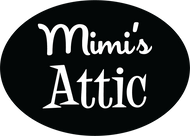All About Art Deco pt 2: American Art Deco
Hello! Eric here with part 2 of our Art Deco blog!
Emerging from previous styles like Art Nouveau, the French’s Art Deco exploded onto the scene in 1920’s and took France by storm with its luxurious, loud designs held within a simplified but efficient frame. Art Deco furniture was statement pieces and the statement was often luxury. It wasn’t until the 1930’s that Art Deco’s style and influence became largely dominant in the United States of America. However, by this time the styles had changed and evolved, and out of Art Deco emerged a re-definition of the styles approach. While the French’s art deco furniture often-emphasized glamour or class, the Americans took it on themselves to streamline the already sleek styles. America’s art deco had a prideful machine made look to its work. Simpler materials were used to communicate a more everyday broad appeal then the fancier French ingredients. The loud colors of the French’s influence were often traded in for more subdued colors; the silvers and grays of metal and chrome combined with the browns of affordable wood. Contrasting layers, such as a blonde wood drawer housed within darker maple, helped the pieces stand out in a vibrant but natural way.
Perhaps one of the most iconic designs to emerge from this is the waterfall aesthetic. Due to its stylish and futuristic design, plus its affordable cost, waterfall furniture flourished in the 1930’s and 40’s across America. Emerging from the Wernicke Company in Grand Rapids, Michigan, and named for its use of curves to simulate the flow of water off an edge, this style was prominent in chests, tables, chairs and even radios. Plywood, which could be bent and molded into curves, was used as the main material while simple metals, like copper, would be used to accent the pieces along with a veneer glossy finish. Instead of traditional frames, edge moldings typically support waterfall pieces. In keeping with the American, approach of the period, many waterfall pieces abandoned the heavily contrasting colors for a more uniform mahogany finish, though more vibrant pieces were not unheard of. Features like handles would typically be made of brass. Like much of the American art deco that preceded it, this style appealed to the middle class which sought uniformity in style, but its affordability also helped the style thrive during the great depression. American art deco was made quite appealing to younger people who, at the time, were seeking their first home or apartment. It’s for this reason that waterfall furniture also earned the nickname newlywed furniture.

Unfortunately, due to their use of affordable materials, many waterfall pieces have not survived the tests of time. The heavy use of plywood means any conditions that could soften the glue, like heavy humidity, would be hazardous to the pieces’ structural integrity. Pieces that have suffered damage like this may appear as if they are peeling apart. Paint stripper will also likely loosen the glue and destroy the veneer. Extreme heat is another enemy; so you’d be wise to avoid mixing cigarettes or irons with your favorite waterfall piece. Simply due to the age of the cheaper material and exposure to everyday life, waterfall pieces that are still in great condition should be treated with great care as they are likely rare.

The streamlined ascetic of Art Deco and its many offshoots has secured a special place in time. It’s a symbol of its era, being easily recognizable to many even if they can’t place a name. While the style was once seen as the future itself now it holds a more nostalgic quality. Typically period pieces will use Art Deco as a communication of an alternative future, a world of tomorrow that has long past and was never fully realized, or a period of optimism as the U.S. proudly marched towards their ideal of progress. The iconic stylings of the yesterdays tomorrow still appeal to the futurists of today.
